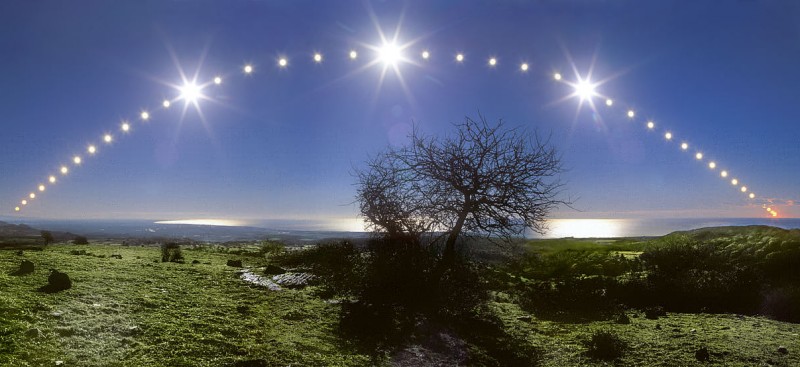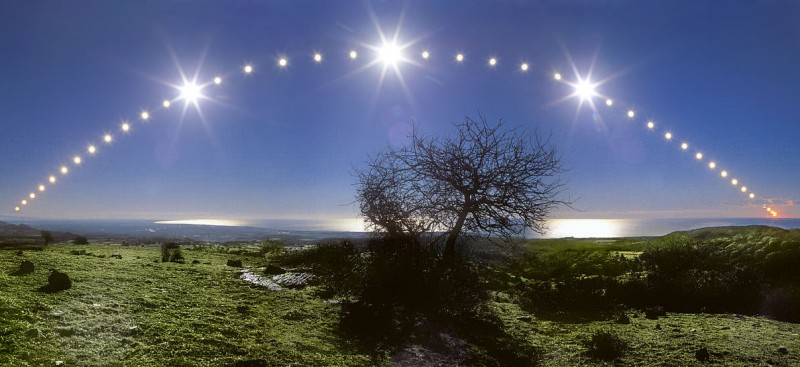

There are many notably way-points that the Earth passes in its annual course around the Sun. Today hosts one of the more notable points: The Summer Solstice (or the Winter Solstice, depending on where you live). The solstice marks the day that the sun is at its most Northern or Southern point in the sky.
The solstice occurs because of Earth’s tilt on its axis. As most of us already know, our planet tilts 23.4 degrees. As a result, the length of a day varies over the course of a year. During one part of the year, the Sun climbs a little higher North each day, which causes more direct sunlight and creates summer. During the other part of the year, the Sun wanders lower in the sky. As the Sun sinks closer to the south each day, the amount of direct sunlight decreases and creates winter. As previously mentioned, the two extremes (when the Sun appears at the Northernmost and Southernmost points) are called “solstices.” This term comes from the Latin words for “sun stationary.”
Today, June 21, 2014, the Earth’s closest star (the Sun, obviously) will reach its Northernmost point in the sky. In the Northern Hemisphere, this marks the longest day of the year. Conversely, in the Southern Hemisphere, today is the shortest day of the year, which is known as the winter solstice.

The other notable events that occur as the Earth orbits the Sun are called “equinoxes.” At these points, day and night on our planet are most nearly equal. This term fittingly comes from the Latin for “equal night.” The equinox occurs because the dividing line between day and night, which is known as the “terminator,” becomes almost vertical and connects the north and south poles. In short, on these days, the tilt of Earth’s axis appears to incline neither away from nor towards the Sun.

Still a little confused? This video may help explain things.
Watch: The Summer Solstice
